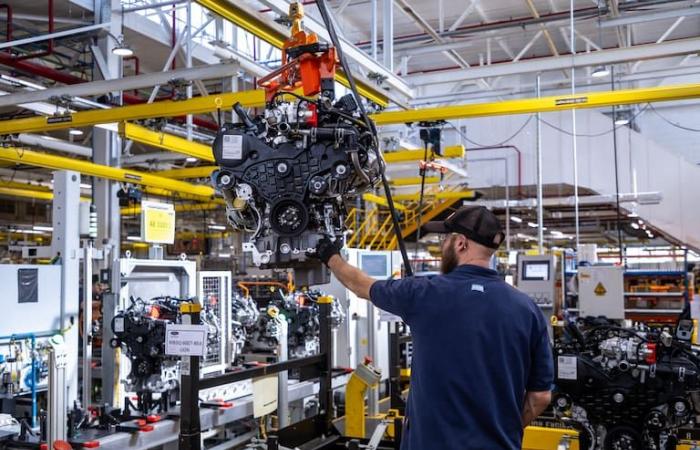Hear
The automotive company Ford inaugurated its new engine plant in the Pacheco industrial complex, where it manufactures the Ranger pickup. The plant, located in a warehouse parallel to the line where the truck is assembled, demanded an investment of US$80 million in 2023, which were added to the other US$580 million previously disbursed to modernize the factory and produce the new generation of the pickup.
With the production of engines in the country, the Ranger will increase its regional content to 50%, the automaker reported. The new plant will produce, on the same line, the two turbodiesel engines: the Lion 3.0L V6, with 250 HP and 600 Nm of torque, and the 2.0L Panther four-cylinder, with 170 HP and 405 Nm of torque.
The engine plant follows the 4.0 manufacturing concept already adopted in other areas of the factory, with a high level of technology, automation, connectivity and sustainability, Ford highlighted during the inauguration. The use of digitalization and intelligent process control contribute to guaranteeing quality and efficiency in production. “The continuous improvement of our products and our competitiveness is key to Ford’s business in the region. Since its launch, the New Ranger has improved in all indicators. “Quality is a great differential of the product, which directly impacts the satisfaction of our customers,” he stated. Martín Galdeano, president of Ford Argentina and South America.
According to the executive, even though it is a vehicle with 95% new parts, the current Ranger has already started production with the same level of quality as the previous generation, a platform that has been improved over more than 10 years of continuous improvement. “This is unprecedented and, with the nationalization of engine production, we take another step in this process of constant improvement,” Galdeano highlighted.
According to the oval automaker, the customer satisfaction level of the Ranger has increased more than 20% since the arrival of the new generation. If compared to other Ford plants in the world, the Pacheco plant stands out in terms of quality, with an index 28% better than the global average of repairs per thousand vehicles produced.
“In Argentina and Brazil, the Ranger was the truck that grew the most in sales volume during 2023, with an increase of 84% and 42.5%, respectively. This year, through May, Ranger continues to grow in market share, reaching 30%” he stated during the inauguration of the engine plant Sebastian TrottaDirector of Sales and Marketing at Ford Argentina.
The new engine factory has an installed capacity to produce 82,000 engines/year in two shifts and was developed with the active participation of the engineering teams from Argentina and Brazil. Its intelligent quality management system uses more than 2,000 sensors and 50 cameras to monitor motors and components throughout the process. “In addition to robots in critical operations, we use artificial intelligence and machine learning systems to guarantee extremely high precision, capable of detecting variations of 0.004% in the process,” said Kleber Fernandes, director of Quality at Ford South America. “The entire operation is carried out sustainably, using 100% renewable energy and zero waste generation to landfill.”
All 129 workstations feature automatic task control, including an intelligent screw adjustment system. They were also designed to optimize ergonomics and comfort for operators, who have received more than 5,000 hours of training. The positive pressure environment and intelligent air conditioning and LED lighting systems contribute to well-being and productivity.
Ford recalled that it invested in total US$660 million in the Pacheco plant to produce the new Ranger and increased installed capacity by 70%, to 110,000 vehicles per year. This transformation included the installation of a line of high-speed presses, and 318 new intelligent automatic welding robots in the bodywork area. The paint plant introduced “high solids” technology. The assembly lines were also equipped with automatic torque tool control, 3D scanning for dimensional control and more than 1,000 cameras and sensors, monitored in real time by artificial intelligence to ensure the truck’s superior execution standard.
THE NATION






